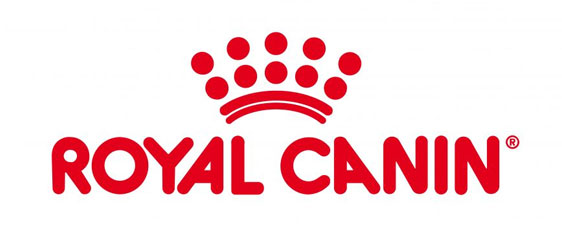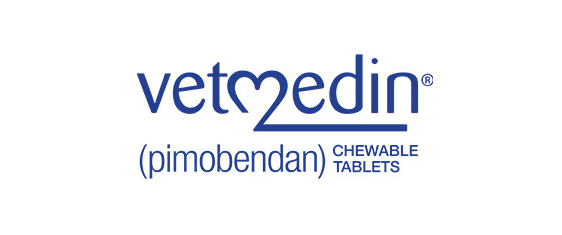Anal Sac Problems & Scooting in Dogs
Doctor of Veterinary Medicine

While efforts are made to answer all questions as quickly as possible, if an immediate answer is required or if your pet is in need of urgent or emergency care, contact your pet's veterinarian immediately.
Doctor of Veterinary Medicine

You will receive an answer from Dr. Lindsay and our vet/tech team as soon as possible, usually the same day.
All answers are provided for informational or educational purposes only, and are intended to be a supplement to, and not a substitute for, the expertise and professional judgment of your pet's veterinarian.
It may be necessary to consult your pet's veterinarian regarding the applicability of any opinions or recommendations with respect to your pet's symptoms or medical condition.
CloseDoctor of Veterinary Medicine

An error has occurred, please reload the page and try again.
CloseWhile efforts are made to answer all questions as quickly as possible, if an immediate answer is required or if your pet is in need of urgent or emergency care, contact your pet's veterinarian immediately.
There is no answer related to your question
When a dog's anal sacs are irritated or infected, blood flow to the area increases. The anal area becomes hot, swollen, and painful. This inflammation causes the tiny ducts that empty the anal sacs to swell shut. With the ducts swollen shut, the material within the sac dries out and hardens, first into a paste, then into a hard, gritty material. If the sac is not expressed manually or opened surgically, it bursts, creating an open, draining tract through the skin.
All dogs have two anal sacs just under the skin below the anus. Anal sacs are round little pouches approximately pea-sized in small pets and grape-sized in large pets. They secrete a thin, yellow-to-brown, foul-smelling material that is automatically dripped onto your dog's feces as he or she defecates. This material communicates information to other animals.
To find the anal sacs, lift your dog's tail, and look in the four o'clock and eight o'clock positions around the anus. Normally, sacs are barely visible because they are soft and compressible, but the opening of a single tiny duct that travels upward from each of the sacs may appear as a light dot. If the anal sacs appear obviously swollen and visibly large, or if they are hard, your pet has a medical problem and it should be addressed by your veterinarian.
Some call the anal sacs "anal glands," but the glands are actually inside the sacs and produce the material that is secreted.
What causes my dog to scoot?
Anything that causes itching, pain, or a dirty bottom can cause scooting. For example, anal sac inflammation, food allergies, and a low-fiber diet are common causes of scooting. Below, the causes of scooting are listed according to whether they cause itching, pain, or a dirty bottom.
When dogs scoot, they slide their bottoms (anus) across the floor or carpet. Scooting is not a healthy activity because it drives bacteria into your dog's skin and into the anal sac ducts. Your dog's entire bottom can become hot, swollen, and infected. Food allergies and anal sac inflammation are two common causes of scooting.
Scooting is as unhealthy for the floor as it is for your pet because it deposits bacteria, a foul odor, and sometimes fecal material, on the floor.
Anal sac inflammation and scooting is a chicken and egg scenario because inflammation caused by any factor—such as fleas, ringworm, or food allergies—can lead to scooting and scooting can lead to inflammation.
Perianal fistulas
A fistula is a tract that tunnels through the skin and deeper tissues of the body. Perianal fistulas are tracts that tunnel through the tissues under your dog's tail. Perianal fistulas are common in German Shepherds and Irish Setters but are rare in other breeds.
German Shepherds and Irish Setters have tails set low and carried close to the body so that air does not circulate under the tail. Bacteria multiply in this moist, dark environment and the immune system responds to the increase in bacteria by sending in white blood cells. In dogs that develop perianal fistulas, the white blood cells are more aggressive than they should be and they attack your dog's own skin. To control the white blood cells and prevent perianal fistulas, drugs that suppress the immune system, such as Cyclosporine, are prescribed. Many dogs with perianal fistulas also have inflammatory bowel disease, a disease also due to an overly aggressive immune system. Perianal fistulas, like inflamed anal sacs, are very painful and have a foul odor.
Difference between anal sac inflammation and anal fistula
Anal sac inflammation is caused when material cannot drain from the anal sacs. With enough swelling, the anal sac bursts open and drains. Perianal fistulas are tunneling tracts under the tail that may, or may not, involve the anal sacs. Dogs with perianal fistulas have low, clamped tails.
Both anal sac inflammation and anal fistulas cause pain and a foul odor. Both may cause pets to lick or chew the area obsessively and to snap if the area is touched.
Itching
Perineal itching is caused by food allergies, biting fleas, ringworm, yeast, intestinal parasites such as tapeworms, and allergy-inducing perfumes, soaps, or sprays.
- Food allergies are the most common cause of perineal itching.
- Fleas are attracted to your pet's tail area because they are safely out of reach of your pet's mouth. As the fleas bite, your pet may scoot in an attempt to scratch the allergic itch caused by flea proteins.
- Ringworm and yeast can infect the skin around the tail and cause intense itching without leaving outward signs such as patchy hair loss.
- Tapeworm segments can cause itching irritation as they exit the anus and collect on the skin and surrounding hair.
- Grooming products, especially when applied directly to the perineal area to cover up the foul smell after anal glands are emptied or when applied to skin that was irritated by a clipper burn, can cause contact allergy and itching.
Pain
Perineal pain is caused by anal sac inflammation, constipation, cancer, skin fold infections, anal fistulas, and clipper burns caused by grooming.
- Anal sac inflammation is often caused by low-fiber foods. While these foods are convenient for us because there is a smaller amount of fecal material to be picked up, they are unhealthy for pets. High-fiber foods are healthy for many reasons, including their ability to produce a stool volume sufficient to empty the anal sacs. Dogs and cats evolved having large stools because they ate the bones of their prey and other bulk-producing, indigestible material. Eating low-fiber kibble is not natural for them.
- Constipation occurs when your pet doesn't defecate. Stool accumulates inside the colon becoming increasingly drier, harder, and more difficult to pass.
- Cancer causes perineal pain when tumors erode the skin or press into the colon.
- Skin folds that become infected with bacteria are painful. Skin fold infections around the tail are common in obese pets and in pets with loose, wrinkled skin around the tail.
- Anal fistulas are painful, draining tracts under the tail. These fistulas may involve the anal sacs.
- Clipper burns and perineal skin irritation are common in frequently groomed dogs, such as Poodles and Schnauzers. If your dog licks his or her bottom obsessively after being groomed, check for skin irritation. Grooming soaps and sprays can also irritate the skin, especially if sprayed on thickly to mask odor after anal sacs are emptied.
Dirty bottom
A dirty bottom is common when dogs have diarrhea, long hair, stiffness that prevents cleaning, or are obese.
- Diarrhea occurs in pets with infections, food allergies, inflammatory bowel disease, and insufficient digestive enzymes. Diarrhea also occurs in pets with Tritrichomonas foetus, which causes dribbling of stool called the "leaky butt syndrome."
- Longhaired cats, such as Himalayans, and longhaired dogs, such as Poodles, Schnauzers, and Shih Tzus, may have trouble with feces being trapped in their coats.
- Stiff pets, especially senior pets, may have inflexible or painful joints so they cannot clean their bottoms.
- Obese pets often cannot reach their bottoms to keep themselves clean.
What causes dogs to lick or chew their bottoms?
Dogs lick or chew their bottoms for all the reasons listed above for scooting. In addition, female dogs in heat, incontinent females dribbling urine, and females giving birth will lick the vulva and perineum. Female pets with infection of the uterus (pyometra) may also lick the vulva.
Dogs most at risk for anal sac inflammation (anal sacculitis)
Anal sac inflammation is common in small dogs, such as Dachshunds, Poodles and Chihuahuas, perhaps because the ducts draining their anal sacs are very tiny and easily obstructed with inflammation. It also occurs in Retrievers and Spaniels more often than in many other breeds.
- Pets eating low-fiber diets designed to create low-residue stools because the sacs are not emptied by the stool when they defecate.
- Pets with food allergies because allergies cause the bottom to itch, and pets to scoot, driving in bacteria that cause inflammation.
- Pets that require regular clipping because clipper burn can cause pain, which leads to scooting and inflammation.
- Pets whose anal sacs are emptied frequently, but not completely.
- Constipated pets with small, hard stools, which occurs when pets are not eating.
- Pets that are not getting enough exercise to stimulate bowel movements.
- Dehydrated pets, such as senior pets with kidney disease, who become constipated because the stool lacks moisture.
Dog breeds most at risk for anal fistulas
Anal fistulas are common in German Shepherds and Irish Setters. These are breeds with low-set tails that keep their tails clamped down. In addition to having anatomical predisposition to anal fistulas, these breeds may have genetic immune deficiencies predisposing them to develop anal fistulas.
Anal, rectal, and perineal
Anal, rectal, and perineal are adjectives that refer to the anus, rectum, and perineum. These are different areas under your dog's tail. Anal is technically limited to the anus, which is the muscular outlet of the digestive tract; and rectal refers to the last few inches of the digestive tract. Perineum is the entire area of your dog's bottom from under the tail around and down to the vulva or scrotum. Although many use the words anal, rectal, and perineal interchangeably, in this article, anal refers to the anus and the area just around it, which includes the anal sacs that empty through ducts at the anus. Perineal refers to your dog's entire bottom area.
- The anal sacs should empty naturally when your dog defecates.
- If anal sacs need to be emptied manually, your dog has a medical problem.
- Anal sacs should not be routinely emptied by groomers.
- Anal sac inflammation is rare in cats.
Prior to using a product such as Animax for treating your dog's anal sac inflammation, the affected area should be cleaned.
































